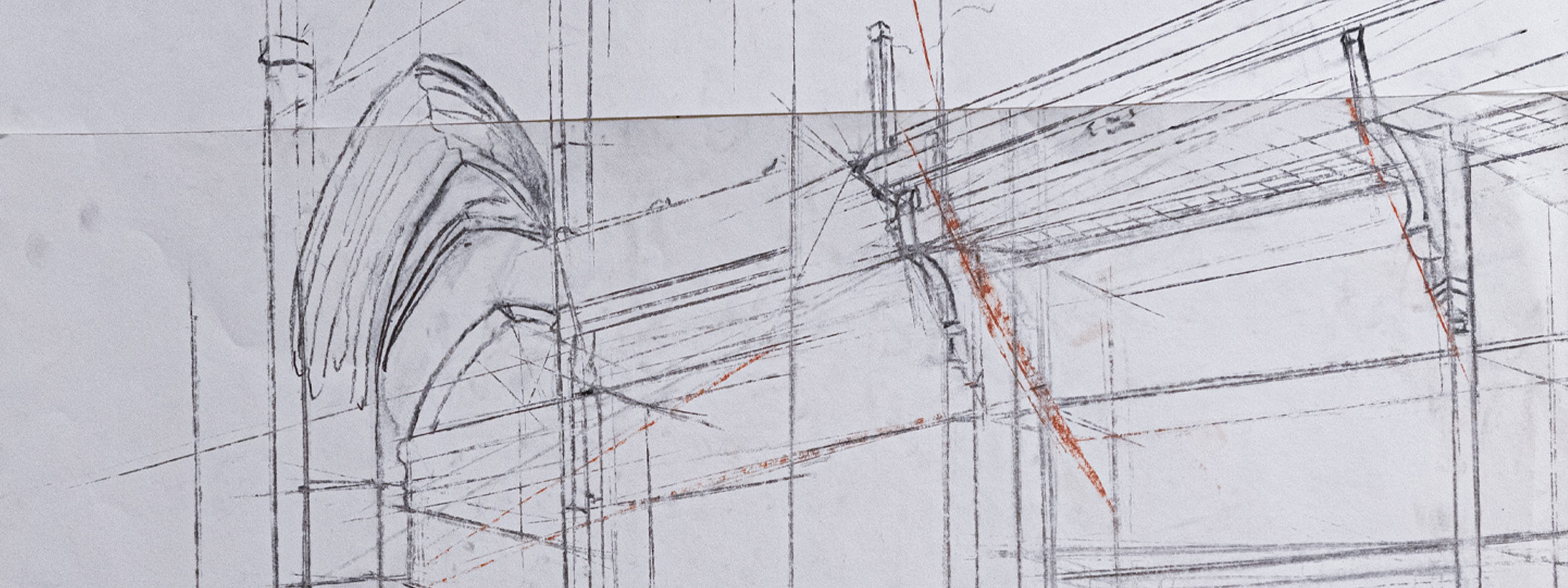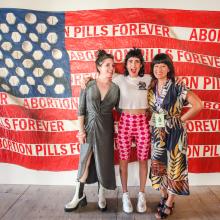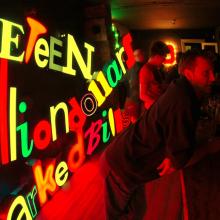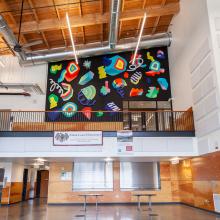Background
Lele Barnett is an art advisor, curator, and producer based in Seattle who has experience working with a variety of artists, organizations, and corporations. She graduated from the UW School of Art + Art History + Design in 1999 with a BA in both Interdisciplinary Visual Arts and Art History. When she was an undergraduate, her name was Leanne Ng.
Interview
What made you choose to double-major in Interdisciplinary Visual Arts and Art History at UW?
When I went to college, I knew I wanted to study art. My mom told me I should major in Graphic Design if I wanted to make any money in the arts. The problem was, I wasn’t a very good designer. UW’s program is extremely competitive — at the time, they only accepted 30 or so new design students each year — and I didn’t make it. But that was OK, because I wanted to try every type of art class. I chose Interdisciplinary Visual Arts for that reason. I also fell in love with Art History and decided to double-major.
Do you have any notable memories from your time as a student here?
Studying art history with Professor Jerome Silbergeld changed me. I had so much respect for him, and when he told me I had a promising future, I believed him. It made me trust myself and know I could do anything — even without a Graphic Design degree.
Is there something you learned while a student at UW that still informs your work today?
The School of Art taught me big picture thinking, and we spent a lot of time discussing what makes art unique and conceptually interesting. That still informs my work today. Truthfully, the most practical information I learned was from the courses I took at the UW Extension College. Learning how to use spreadsheets for budgets and inventories was invaluable.
Would you provide a synopsis of how your career developed, from the time you finished your BA to now?
After I finished my BA, I worked in galleries and fundraising for non-profit arts organizations. In 2006, I opened McLeod Residence, a home for extraordinary living through art, technology, and collaboration. It unfortunately closed due to fire code issues after two years. I still had exhibitions I wanted to put together, so I began guest curating at venues like the Wing Luke Museum, Bumbershoot Festival, and Washington State Convention Center. Then, from 2011 until the end of 2018, I served as the Curator of the Microsoft Art Collection, acquiring art for buildings across North America. I decided to start my own art advisory in 2019, which continues today. Now I spend most of my time working with Meta Open Arts, and I’ve also curated projects for Starbucks Art Collection, Washington State Arts Commission, and Community Roots Housing. I advise private collectors and foundations as well.
Do you have any particular favorites among the projects on which you have worked?
McLeod Residence was special. It was a hundred-year-old home in Belltown, and we filled its rooms with immersive, interactive art installations. We hosted visual artists like Paul Rucker and musicians like Macklemore. It was a weird and wonderful home for creativity and experimentation, back when Seattle felt a little scrappier.
This summer I curated Howl with Amanda Manitach, as part of the Forest For The Trees art activation. Howl was an exhibition of large-scale works by female-identifying and nonbinary artists using their artistic voices for urgent and timely expression on topics such as collective healing, bodily autonomy, and survival.
With Meta Open Arts, I was part of the team that produced Emerging Radiance with artist Michelle Kumata and filmmaker Tani Ikeda. With augmented reality, the project honors the untold stories of Japanese American farmers who lived in Bellevue from 1920 to 1942 before they were forcibly uprooted and incarcerated during WWII. Emerging Radiance won the 2022 Tribeca X award for Best Immersive Project.
What are your current and/or near future projects?
I have an exhibit up now at the Wing Luke Museum through May 2023. Reorient: Journeys Through Art and Healing focuses on themes of history, immigration, cultural pain, and the process of finding sanctuary and healing in artistic practice. The featured artists — Victor Kai Wang, Suchitra Mattai, Jean Isamu Nagai, and Tuan Nguyen — work in non-traditional media to share personal stories of history and heritage.
I’m also working on a project for the Tacoma Art Museum that opens in May 2024. In (Re)Frame: Haub Family Collection of Western American Art, I will be one of four guest curators reimagining the American West from outside the colonizer’s narrative.
Do you have recommendations for specific topics and/or skills students in the arts should learn at UW or through other experiences?
My time at UW was challenging because I worked full time while I went to school. I’ve had a job since I was 15, and I even worked full time toward the end of high school. That was difficult, but still, I recommend getting a job in addition to studying. Learning how to be a salesperson at a young age benefited me greatly, and I’ve found the ability to sell has helped in everything I’ve ever done.
If an undergraduate or their parents asked you about the value of an arts degree, what would you say?
An arts degree gives you time and space for training, discovery, and making. It allows you to be a part of a community, and that opens opportunities. That time and space can be found in other ways — I've worked with brilliant and successful self-trained artists — but I do think it’s important to study art history and contemporary art to understand where your work fits into the larger dialogue, and the University of Washington has an excellent program.
Links
- Website
- A Conversation with Lele Barnett (Wing Luke Museum)





